
With Alien: Romulus on release from August 16th, Cineworld blog editor Sean Wilson recalls his first experience watching Ridley Scott's Alien and the long-standing effect it had on him.
As a child of the late 1980s, my pop culture knowledge was shaped by a great many things, largely Disney-related. I was lucky enough to ride the wave of the 'Disney Renaissance' period, which started with 1989's The Little Mermaid and went on to encompass path-breaking gems like Beauty and Beast (1991, and the first film I saw in the cinema), Aladdin (1992), The Lion King (1994), Pocahontas (1995) and The Hunchback of Notre Dame (1996).
I was also indelibly shaped by TV viewings of mid to late-eighties movie classics whose cinematic releases had preceded my birth. Ghostbusters (1984) was perhaps the most significant of these, instilling in me a subconscious love of horror, fantasy and the supernatural (would that I had also developed the requisite level of Bill Murray sarcasm to get through my school years).
Close behind Ghostbusters was Steven Spielberg's seminal Indiana Jones trilogy (yes, I still see the series as a trilogy), primarily Raiders of the Lost Ark (1981). I was alerted to the film's presence via a BBC One clip ident that showed Harrison Ford running into an extreme close-up in the Cairo marketplace. I simply had to watch the movie and when I did, the rest, as they say, is history.
Other films that exerted an important influence on me included The NeverEnding Story (1984), Who Framed Roger Rabbit (1988) and Willow (1988). One could say that I was something of a fantasy and adventure junkie when I was younger, and from there, it's surely a hop, skip and jump into the horror realm, which similarly but not exclusively deals with outlandish subject matter.
At the age of 12, I started to transition into harder-edged subject matter; I'll never forget how mind-blowing my first experience of Die Hard (1998), then rated with an irresistible 18-certificate, was. As mindblowing, in fact, as terrorist Hans Gruber (Alan Rickman) landing a bullet in the forehead of the unfortunate cokehead Ellis (Hart Bochner).
At the age of 14, I was already bingeing gorier and more grown-up content regularly, including Event Horizon (1997), Starship Troopers (1997) and Blade (1998). The glancing horror stylistics of films like Raiders, Ghostbusters and The NeverEnding Story were now reaching their logical output in my consumption of full-bore horror content.
I was aged 14 when I first set eyes on Ridley Scott's seminal sci-fi horror Alien (1979). It was a movie whose reputation preceded it: I had been aware for some time of the eerie poster with its oblique yet subtly terrifying shot of an object (was it an egg?) cracking open to reveal what looked like a radioactive light pulsing from within.
Alien was one of several horror/thriller movie covers that had arrested my attention back in the days of the independent video shop and Blockbuster. Others that I remember sending a chill down my spine included Martin Scorsese's Cape Fear (1991), which showcases Robert De Niro's glowering eyes framed against a lightning-scorched backdrop, and the skull-in-the-clouds look of Wes Craven's The People Under the Stairs (also 1991).
In truth, I owe my love of horror to movie artwork as much as anything else. Horror films are uniquely positioned to deploy operatically creepy and lurid collisions of good and evil on their cover designs, but Alien was special because the main image managed to preserve the film's sense of mystery. As I looked at it, and this happened every time we went down to the video store, I found myself wondering what the film was about, and how scary it could be.
At the age of 14, I got my answer. I watched it at school, of all places, my media studies teacher having convinced us all it was a good idea. Given the film was rated 18 at the time (this was 2002), we each had to attain letters of permission from our parents in order so we could watch it.
It's impossible to imagine how the film experience could have been hyped further: there's nothing more exciting for a young film fan than the promise of watching something illicit or trauma-inducing. Fortunately for me, and this seems like a complete fluke in hindsight, everyone's parents signed off on the idea, perhaps taken in by the suggestion that this was some kind of academic school exercise.
In truth, I can't remember why we watched Alien specifically. It certainly wasn't on the syllabus. But I can certainly remember the experience, beginning with the portentous build-up as the old-school media studio TV set was wheeled in from the side room on its trolley to be set in front of a class of students, all of whom appeared eager to be terrified.
The analog nature of the viewing somehow stands out in my mind. Writing this down, it sounds like a somewhat anemic way to watch a ground-breaking horror classic, one that changed the nature of sci-fi forever. Maybe it was more about the context in which I watched the film: in 2002, there was no social media to stoke hype or give away spoilers, and no one had mobile phones or tablets with which to become distracted.
Instead, it was full immersion, even via a poxy TV set that predated plasma and flat-screen home viewing. I was enraptured by the sinister growl of Jerry Goldsmith's score over the famous, slow-burn title reveal, entranced by the slow tracking shots around the desolate nature of the space tug Nostromo and stunned by the Nostromo crew's discovery of the 'space jockey' on LV-426.
Even in its miniaturised presentation on a school television, the film communicated a majestic awe of menace and biomechanical beauty (biomechanical being the term ascribed to Alien designer H.R. Giger). I visibly remember the roars of disgust during the notorious chestburster sequence and the relentless suspense as the Nostromo crew members are picked off by the adult xenomorph, constantly keeping us in flux as to whom would survive.
The alien itself immediately asserted itself as a jaw-dropping marvel of effects design. As a 14-year-old, I don't think I'd come across a monster so repulsive, and a lot of that was down to its humanoid tendencies. There's something deeply and horribly wrong about the alien's quasi-human physiology laced with an inner mouth, a tail and a carapace concealing its eyes.
It's both familiar and unfamiliar at the same time, buoyed by Giger's superbly active imagination and the graceful balletic movements of actor Bolaji Badejo (who had been discovered in a London pub by a member of Scott's casting crew).
In fact, the element that most disturbed and unsettled me related to Ian Holm's Ash. I was familiar with the late British thespian through his work as Pod Clock on the TV series The Borrowers; he'd also played Bilbo Baggins in The Lord of the Rings: Fellowship of the Ring (2001). Both characters are benign, cosy and delightful company.
Ash, to put it bluntly, is not. Holm's superbly subtle performance implies there's something off with the character via his twitchy and introverted nature. However, when it's revealed that he is a plant within the Nostromo crew, an agent of the Weyland-Yutani company tasked with bringing the alien safely back to Earth, I was horrified.
All of a sudden, a perfectly scary and gorgeously designed monster movie started to radiate extra levels of paranoia and tension. It made me reassess all the tragic deaths that had come previously, from Kane's (John Hurt) chestbursting demise to the shocking disappearance of the Nostromo's nominal leader Captain Dallas (Tom Skerrit) in the air vent.
The moment when Ash attacks Ripley (Sigourney Weaver), later to become the sole survivor of the Nostromo, left me bewildered and disgusted in the way only the greatest horror movies can. Why did he appear to be sweating milk? Had the alien surreptitiously got to him as well?
When the ship's brash engineer Parker (Yaphet Kotto) confronts Ash to save Ripley and knocks his head clean off revealing him as an insurgent company android, it ranked as one of the most shocking twists I'd ever seen in a film. It recontextualises the entire narrative: the Nostromo crew are guinea pigs and, as the smugly resuscitated Ash reminds them, the creature is essentially indestructible.
It's the perfect way to set the end game in motion. Bearing in mind I was ignorant of all the academic literature surrounding Sigourney Weaver's status in Alien. I had no idea that Ripley would be the only one left, the tenacious survivor tasked with self-destructing the ship and killing the xenomorph (albeit by blowing it out of the airlock of her escape shuttle in which the creature is now housed, another fabulously blood-curdling twist).
I was enthralled by my initial viewing of Alien; it was like nothing I'd ever seen. I was so keen to watch it again that I logged in to my parents' nascent Amazon account and ordered the single-disc DVD to play over and over again to my heart's content on my PlayStation 2.
I couldn't imagine how profound the second experience would be. The DVD transfer (bearing in mind this was pretty crude back in the pre-4K era of 2002) enhanced all manner of mind-blowing aesthetic detail that had passed me by during my school viewing. I remember being overwhelmed by the crisp restoration of the film's opening sequence as the vast bulk of the Nostromo implacably passes over the camera.
Where had this sense of scale and visual nuance been when I first watched the film? For me, it made an excellent case for seeking out and purchasing classic films on hi-def formats lest so many details go unnoticed. From the strobing of the soon-to-self-destruct Nostromo to the pulsating blue laser above the LV-426 egg chamber (borrowed from The Who, trivia fans), it was as if I was watching Alien for the first time again.
I vividly remember firing up this DVD regularly to listen to Ridley Scott's warts-and-all director's commentary. Many filmmakers were snobby and standoffish about providing such things, but not Scott. He was one of the first directors to embrace the possibilities of the DVD medium and nothing was off the cards as he delved into design, performance and music with lucid and evident glee.
Another wonderful feature was the opportunity to isolate Jerry Goldsmith's haunting score in the audio stream, allowing one to listen to the soundtrack as it was originally intended. Goldsmith's work was famously tampered with by Scott and editor Terry Rawlings in the finished cut; by listening to the music on its own terms, I could grapple with Goldsmith's mastery in musically rendering the xenomorph and the mystery of deep space.
From there, it was a natural progression to James Cameron's terrifically exciting Aliens (1986), which rapidly became another favourite in my film arsenal. I then retrospectively started to grapple with the tortured fallout from David Fincher's Alien 3 (1992) whose excellent assembly cut still isn't well-known enough. Alien: Resurrection (1997) is largely baffling albeit with excellent moments.
In 2004, I was able to group all of these films via the newly released Alien Quadrilogy box set (yes, I thought it was a made-up word as well). Not only could I feast on the movies but the DVDs were pregnant and overflowing with all manner of fascinating extras, particularly regarding the tortured creation of the soundtracks from Jerry Goldsmith, James Horner and the like.
For all the multifaceted sequels, rebootquels, standalone sequels and spin-offs that have come to define the Alien series, for me, the original remains the best. A large part of that is down to how I saw it: there's nothing quite like a film leaving a psychological scorch mark in your mind, although sometimes one dons the rose-tinted glasses as to these formative viewings.
Not Alien, though. It was a coruscating experience on first viewing and subsequent watches only serve to amplify this feeling. I see more in the film now than I did when I was younger, particularly the anti-monopolistic sentiment exerted toward the movie's non-visible villains, Weyland-Yutani.
When I was younger it was all about the creature, and brilliantly horrifying though the xenomorph was, and still is, the real chill lies in the suggestion of humans as disposable chattel, adrift in deep space with no one to hear them scream. Little wonder Alien remains one of my favourite horror films: it hatched within me a deep-seated love of the genre, its mutability and its tendency to go places I wouldn't dare imagine.
Click the link below to book your tickets for Alien: Romulus. It hits Cineworld screens on August 16th.

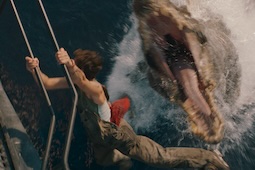

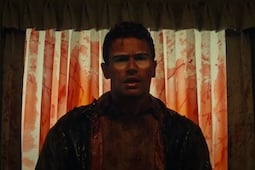
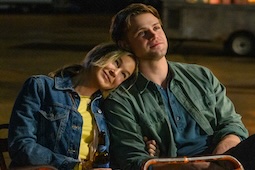
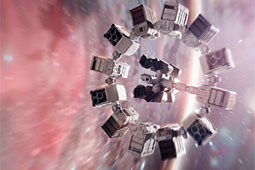
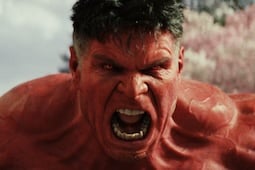


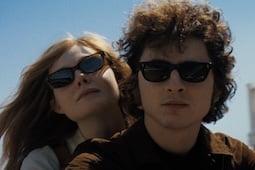




.jpg)
.png)






